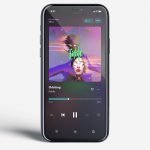NUPRIME HI-MDAC REVIEW
Chris Baillie takes a listen to the £125 Nuprime Hi-mDAC.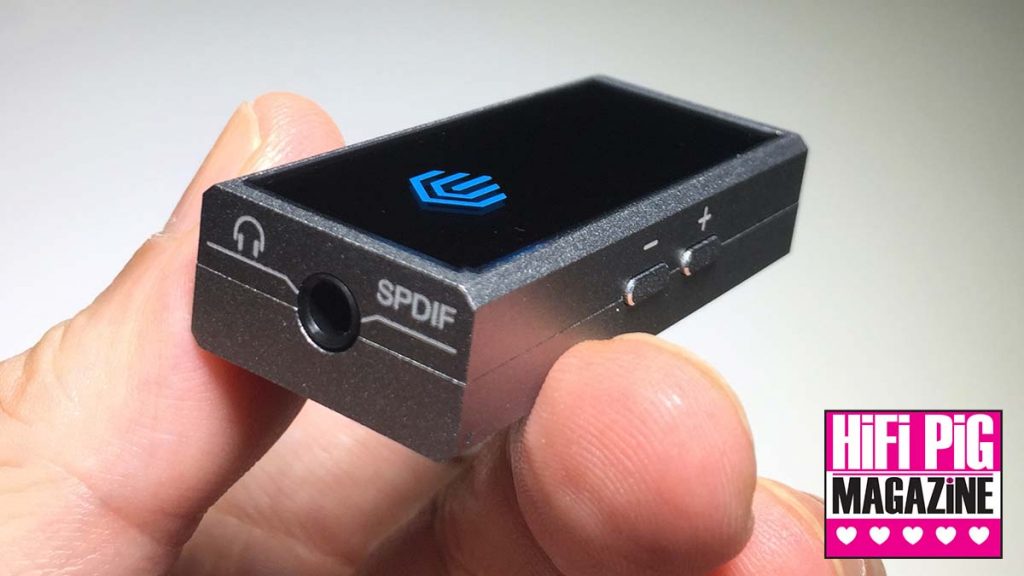
The Hi-mDAC from Nuprime is the cheapest and smallest piece of audio equipment I have been sent for review. Despite this, I was intrigued to try it out and compare it to the more expensive headphone products with which I have recent experience. I have always wanted to listen to music via my computer, desk-bound, yet without the compromises one usually experiences, that guilty feeling of knowing the DAC I am using would sound much better via a dedicated streamer. The Hi-mDAC seems to fit this criterion perfectly, small and cheap enough that you do not need to be too precious about whether you are getting the best out of it or where you take it. Yet it is designed by people with a discerning pedigree.
The Hi-mDAC is based around a Cirrus Logic CS43131 chip, which is mated to a customised, low power USB comms chip. The clever electrical bits are packaged into a CNC aluminum casing, USB C input at one end, 3.5mm output socket at the other. Two buttons to control the volume complete the description. The clever bit is the 3.5mm headphone output socket, which doubles up as an S/PDIF digital output socket, capable of sending DSD over DoP.
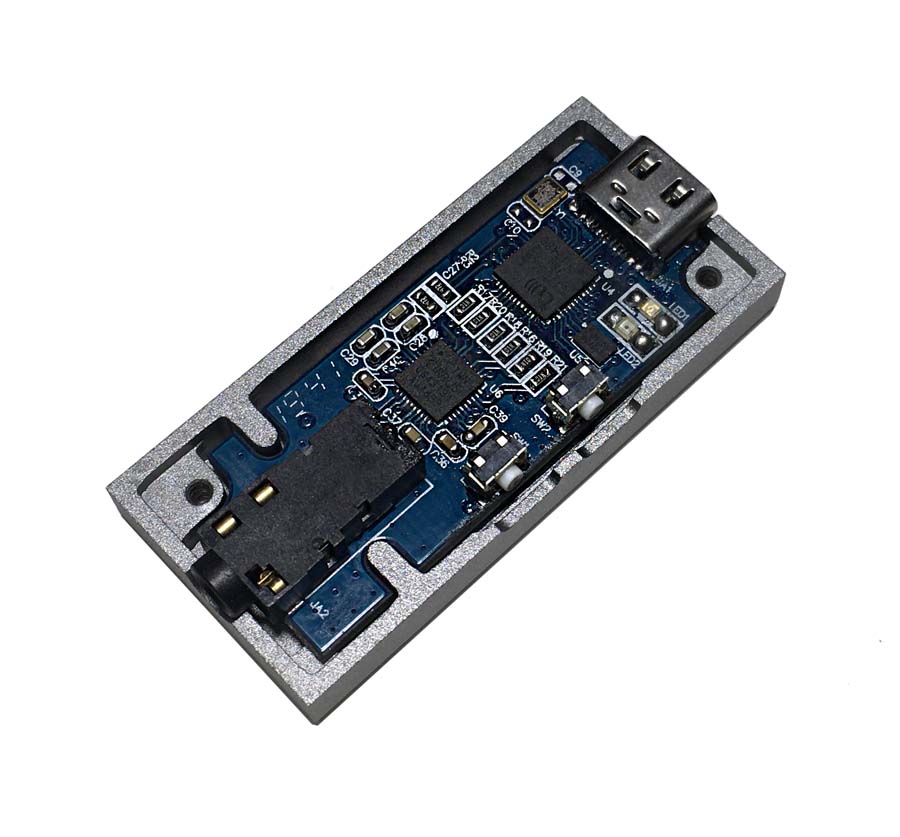
Inside the NuPrime Hi-mDAC.
SET-UP
Upon unboxing, I followed my usual procedure of diving straight in and seeing if I could get it working. Fortunately, in the case of connecting to my Windows PC, this was one of the occasions where it worked, and within a couple of minutes, I was streaming from Qobuz, via the native PC App. Presumably, the biggest target market for the Hi-mDAC will be for use with mobile phones and tablets. Unfortunately, there is a generic issue with the Android platform. The Android system does not allow music to be sent to an external device unless a suitable App is used. Unfortunately, streaming apps like Qobuz or Tidal will not allow digital music data to leave the device. I have previous experience using Android devices with my Chord Mojo, and so I already had Onkyo HF Player installed on my phone. Fortunately, I have purchased dozens of albums from Qobuz over the last 5 years, so it was just a case of downloading a few of them to the phone into a folder accessible via HF player. Although I have an iPad, a small cable incorporating a device called a ‘camera adaptor’ is required to connect external DACs to Apple devices. Not having one to hand meant I could not test the Hi-mDAC with my iPad. From what I understand, it is possible to send music direct from most music player Apps to external DACs via the ‘camera adaptor’, so far more flexible than it is for us Android users.
I listened to the Hi-mDAC via my HifiMan Sundara, PSB M4U1 headphones and Cardas A8 IEMs. Although I did not test the DAC with my main system, there is no reason why it could not be used in such a configuration as a bridge between a budget system and a phone/tablet/PC. All that would be needed for this would be a 3.5mm minijack to stereo phono adaptor.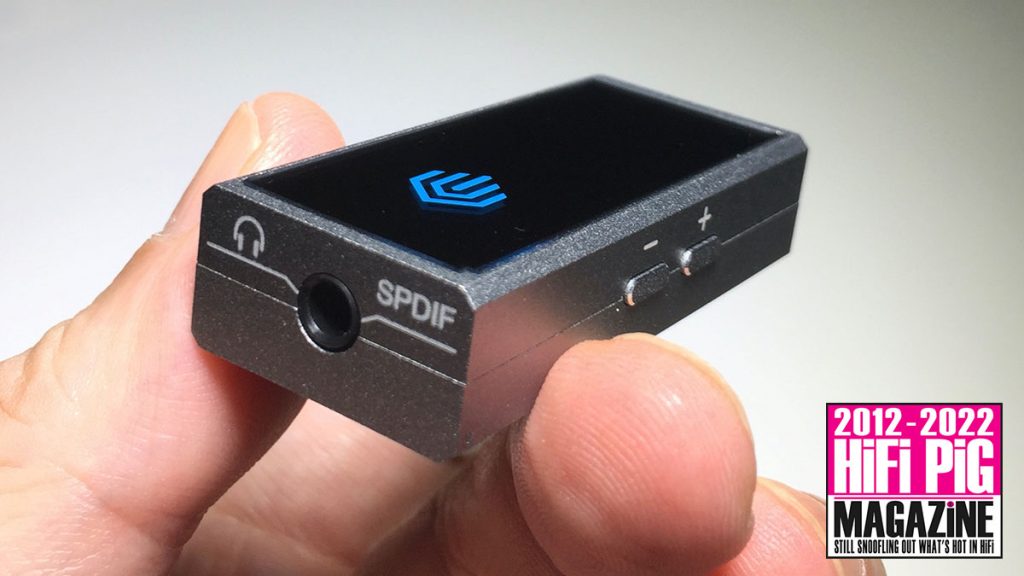
SOUND QUALITY
I started off listening to a few tracks, streamed to my PC using Qobuz and was pretty impressed with th Will Powers’ album Dancing For Mental Health, which the artist Jane quoted as having been an influence on a recent album of hers. I was pretty young when it was released, but I did recognise the big hit from it, Kissing With Confidence. I enjoyed a bright and clear sound with plenty of detail. Any sins here were indeed only those of omission, save a slightly edgy top end, which was not helped by the recording.
Next up was an album featuring Frank Zappa’s recorded acoustic, This was a nice surprise as Zappa’s guitar cut through the mix nicely and Beefheart’s vocals howled as they should. I would describe the sonic balance as on the ‘polite’ side and perhaps a little lacking in the weight and drive that I was used to, but it was an impressive performance for the price of entry. Compared to the output directly from my PC’s motherboard DAC showed that the Hi-mDAC was more open sounding, with a sense of layering and depth absent via the direct connection, so an excellent upgrade for only £125.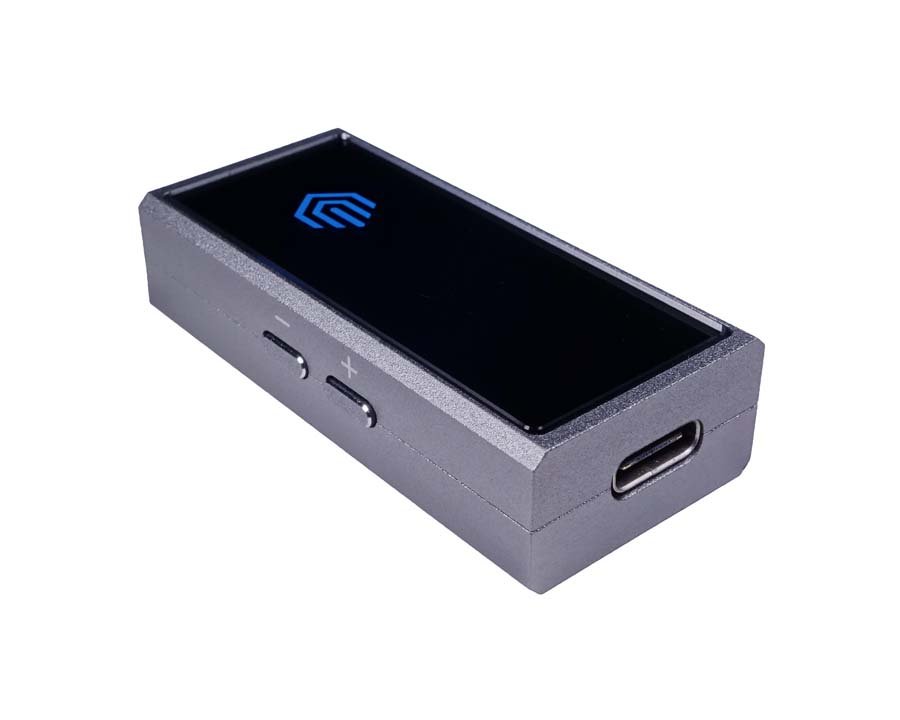
Next, I fed the Hi-mDAC via my Samsung S21 phone. I enjoyed a slightly cleaner top end and a wider soundstage than I obtained when using the PC as the source. Aldous Harding’s Designer bounced along nicely, with a decent level of insight and, again, it was good to hear a sense of ambiance and acoustic from a DAC of this price. Unfortunately, like many modern phones, the S21 does not have a headphone socket, so I could not compare such an output. Considering a previous phone that was barely able to drive my Sundaras to a certain level, the Hi-mDAC is likely to be a significant upgrade over the DAC and headphone stages of many phones. I hooked up my Chord Mojo1 to the phone and listened to a few tracks as a reference. Radiohead’s Knives Out improved considerably via the Mojo, which sounded faster and more rhythmic and offered a more open and detailed presentation with stronger bass. Considering the price difference between the two units, this was not surprising.
CONCLUSION
The Hi-mDAC offers excellent value for money. It is a great option for those wanting to improve the sound of their mobile device or computer, for minimal outlay. Yes, something more expensive like the Chord Mojo sounds much better, but not everyone wants to carry around something so big and expensive. Not having a battery, the Hi-mDAC can run for as long as your phone or laptop can power it. Even if you have a more expensive DAC or DAP, it would be great to leave in the office drawer to enjoy when such players are not available.
AT A GLANCE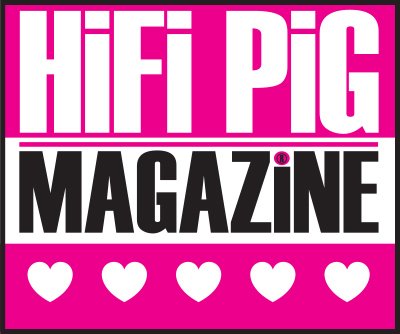
Build Quality:
The aluminium body is lightweight but feels like it will last
Sound Quality:
Open and detailed, giving far more insight than my computer’s direct output
Value For Money:
Excellent. I have not compared it to similar price devices, but it does offer a significant improvement over the sound direct from most phones and computers
We Loved:
Considerable upgrade over the sound direct from most computers and phones.
Compatible with almost all audio formats
Compact dimensions
USB powered
We Did Not Love So Much:
For the cost of the product, criticisms are nit-picking. However, I prefer a sound with a little more drive and energy
Elevator Pitch Review: It is a handy device for those wanting better performance from their phones or computers. Easy to set up and use. Battery-free and able to drive most headphones, it is likely to be partnered with.
Price £125, €149

Chris Baillie
SPECIFICATIONS
- Input: 1 X USB (32-bit/384kHz & DSD256 decoding)
- Output: 3.5mm analog or 3.5mm optical (PCM 192kHz, DoP64)
- Frequency Response: 20-20kHz +/- 0.5dB
- S/N Ratio: > 100 dB (20-20kHz A-weighted)
- THD+N: 0.005% @ 1mW



















































